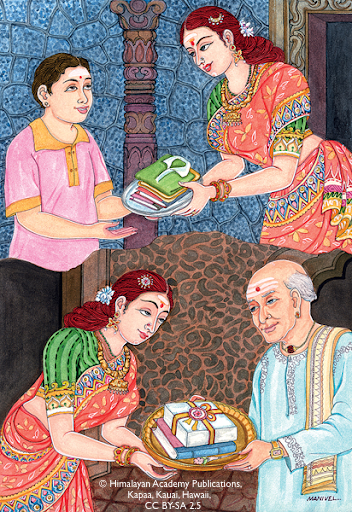I recently had the opportunity to teach a guest lesson in a 6th grade classroom. The students had engaged with the context and historical documents surrounding the historical topic at hand and I came in to guide them through outlining an evidenced-based essay. Their task was to answer this prompt: Compare and Contrast TWO of the following Hindu teachings: dharma, karma, samsara, and moksha. Whereas many 6th grade classrooms teach about Hinduism and its ancient roots, this task asked students to make evidence-based comparisons between two core Hindu ideas in an effort to better understand their relationship to one another.
Honestly, I didn’t know what to expect when I entered the room. To start, I asked students to define each term. To my surprise, almost a dozen hands went up with each solicited definition and every time a student answered, they were spot on. Of course, this is a testament to their teacher who more than adequately prepared them for this task in historical thinking.
Once we defined each term, we decided that we wanted to focus on dharma and karma in our essay. For those of you who are unfamiliar with these terms, dharma means the “right way of living,” or duty for all living things. Karma means “action.” It is the Hindu principle that every action has a consequence, both positive and negative. Students were to analyze several documents ranging from excerpts from The Bhagavad Gita, The Ramayana, and The Brihadâranyaka Upanishad. Each is a core text to the Hindu religion.
To be honest, I wasn’t quite sure if students were going to be able to identify both similarities and differences between the two concepts. But once again, I was pleasantly surprised. One student quickly noted that both ideas deal with people’s actions–a similarity. We quickly wrote this similarity down. Students continued to talk through their own thinking about the concepts in order to make comparisons. It was an empowering sight to see. Here, 10-11 year olds thought through concepts foreign to their own life experience in order to better understand their relationship to each other.

When we moved to differences, students had quite a bit of conversation under their belt. One student excitedly raised her hand to share a difference she noticed between the two. While dharma is something people choose to do (after all, we all neglect our duties sometimes), karma is something that happens to people no matter what choice they made. For example, she went on, people can avoid their dharma but they cannot avoid the resulting karma. Whether good or bad, karma will come. Dissertations are made of this type of simple but nuanced distinction. It demands further analysis (which the students then did with the primary sources) and, in the end, facilitates a deeper understanding of the topic at hand.
In this classroom, students were not merely recalling information about a religion. They were diving deeper. They were incorporating evidence from documents that were thousands of years old in order to make subtle distinctions between complex concepts.
This was not a university level world religions course. These were 6th graders. Many have not even hit puberty yet!
At Thinking Nation, we know that students are capable of deep thought. We want to equip teachers to facilitate such learning experiences for students because we know that students walk away from such experiences feeling empowered. Historical thinking empowers.